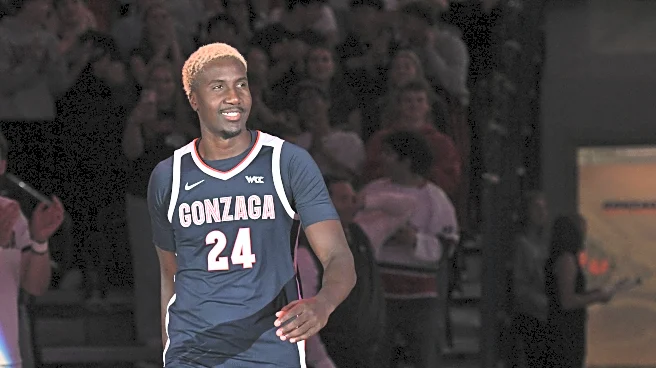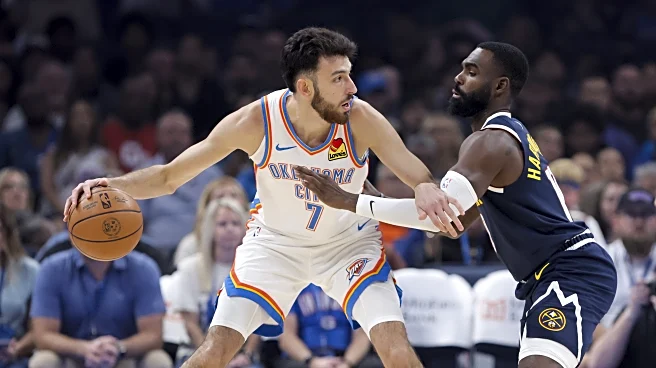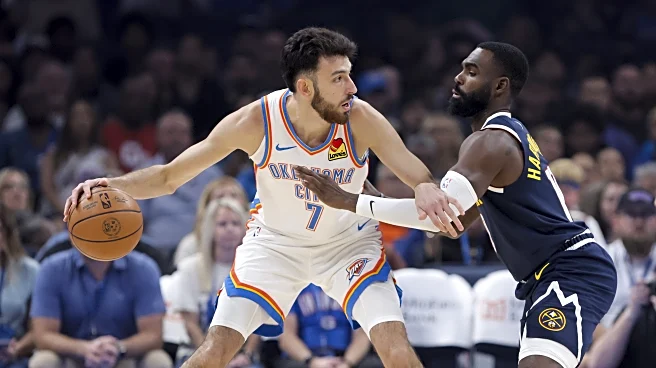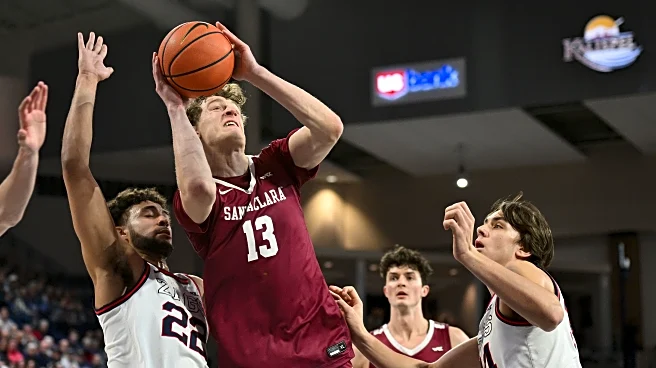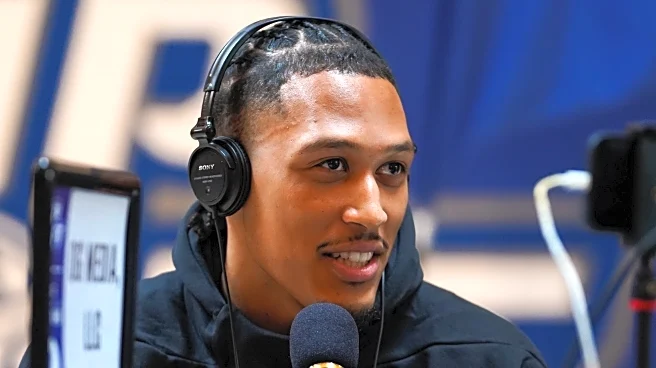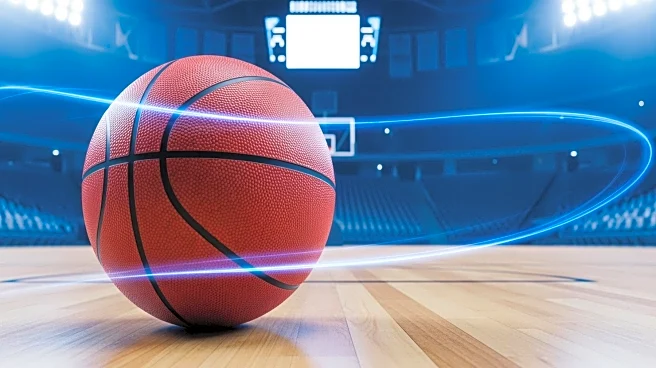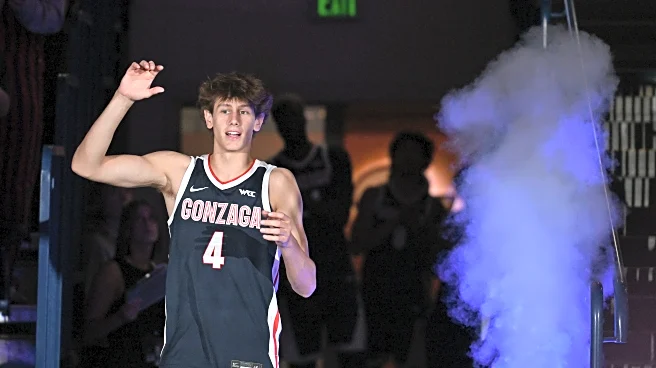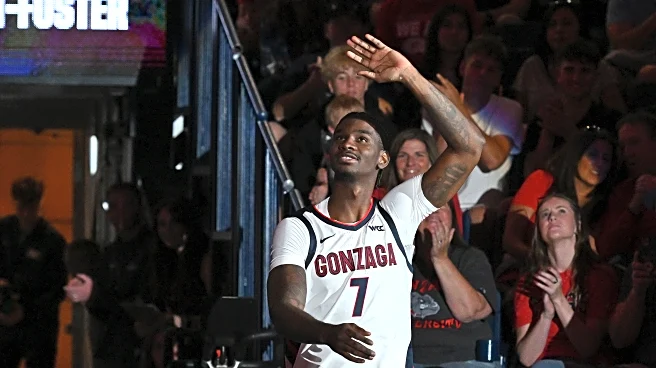The 2025–26 season has barely begun, but Gonzaga fans have already been given their first real hints of just how valuable Ismaila Diagne will be for the Zags this year. Through the Kraziness in the Kennel
scrimmage and the exhibition win over Northwest University, the 7-foot sophomore has moved from theoretical upside to observable influence. In 15 minutes against Northwest, he scored 8 points on 3-for-6 shooting, grabbed 8 rebounds (4 on the offensive glass), committed 3 fouls and 3 turnovers, and went a dismal 2-for-8 at the free-throw line. The showing was uneven in finish yet undeniable in force.
These are still early glimpses, not conclusive assertions, but the through-line is consistent with everything his limited 2024-25 minutes hinted at: Diagne impacts possessions through size, rebounding, and vertical pressure in ways no other player on the roster replicates. That being said, he also brings volatility unlike anyone on the roster through fouls and turnovers, raising real questions about how many minutes Mark Few will be able to allocate him behind Huff and Ike. What is emerging for Gonzaga is a player whose role now carries real weight in its frontcourt structure. The sample is still small, but the influence is already visible.
Last Season By the Numbers
Few players generated as much intrigue and hype as Diagne through his limited role last season. And what makes him particularly fascinating is not only his output, but how dramatically different that modest box score contribution looks once you zoom out from per-game averages and evaluate him through per-minute impact. As a freshman, Diagne averaged 6.6 minutes per game, barely enough time to start sweating, yet within those minutes he produced at a rate that would project to 20 points, 11 rebounds, and more than two blocks per 40 minutes.
Diagne shot 80% from the field and 83% from the free-throw line. His true shooting percentage ranked among the best in the country for players with similar usage. That is not something you usually see from a raw, international freshman adjusting to the physicality and pace of the college game.
His block rate also placed him in the top tier of rim protectors nationally. His defensive rebounding percentage signaled a player who does not merely clean the glass but eliminates second-chance opportunities altogether. The team’s defensive rating improved when he was on the court. His box plus-minus peaked above +8 in conference play. Even in small doses, he bent the game in Gonzaga’s favor through his scoring, rebounding, and defensive presence.
The highlight of his season came against Santa Clara when both Graham Ike and Braden Huff found themselves saddled with some early foul trouble. Over 18 minutes, Diagne took over and completely changed the complexion of the game for the Zags. He finished with nine points, three rebounds, and a block, but the numbers do not capture how visibly Gonzaga’s defense changed with Diagne on the low block. Drives that had been available earlier were turned away. Guards who had been probing stopped entering the lane altogether.
The only number that tempers his rise is the foul rate. Per 40 minutes he averaged more than 10 fouls, which means he was effectively playing at half-speed just to stay on the court. That is the swing skill. If Diagne cuts his fouls, he plays. If he plays, Gonzaga’s entire defensive identity improves dramatically and second-chance scoring opportunities increase exponentially.
Foul trouble, quantified
Teamwide, Gonzaga averaged 16.8 personal fouls per game last season, with personal fouls per play at 20.8%. Those figures sat in the middle of the national pack rather than the extremes, yet they still forced rotation management in key spots because of how the fouls clustered among bigs.
Ike carried a heavy usage load and drew plenty of contact on both ends, and the numbers reflect that burden. He averaged 2.9 fouls in 22.6 minutes and posted 4.7 fouls per 40 minutes, a workable figure for a primary scorer that still created delicate substitution windows, hence Few’s reluctance to play Huff and Ike side by side for the initial portion of the season.
Diagne’s rate tells a different story. As a freshman he logged 1.7 fouls in only 6.6 minutes per game. That scales to roughly 10.3 fouls per 40 minutes, which explains why even short stints felt precarious. His efficiency was outrageous, his rim protection changed possessions, and yet the clock on each shift felt shorter than the run itself because one reach or undisciplined vertical contest could flip the sub pattern.
With Ike near five fouls per 40 and Diagne around ten, the staff will manage minutes with intent, and every reduction in foul rate pays off immediately in lineup options.
Frontcourt Structure and the Diagne Effect
Gonzaga’s best teams have been built around defined frontcourt roles that allow a center and a power forward to do what they do best alongside one another. In 2017, Przemek Karnowski controlled the low block while Zach Collins delivered 17 points, 11 rebounds, and nearly four blocks per 40 minutes in a complementary role off the bench. In 2022, Drew Timme led the low-post scoring attack while Chet Holmgren produced 3.7 blocks per game and posted one of the top defensive ratings in the country. Those pairings gave Gonzaga two functional bigs with separate identities: one to score, one to rebound, block, and control space.
This season follows that same historical model. Graham Ike averaged 16.5 points and 7.4 rebounds in 2024 while ranking among the national leaders in fouls drawn per 40 minutes. His scoring came from deep catches, face-ups, and high-usage post touches. Braden Huff added 11.5 points and 5.3 rebounds on 55% shooting from the field in 20.3 minutes per game. His three-point percentage finished below thirty overall, yet his offensive rating remained among the best in the WCC due to his efficiency around the basket and in short-roll playmaking.
Ismaila Diagne changes the geometry of Gonzaga’s frontcourt completely when he’s on the floor, and with Ike and Huff getting minutes alongside one another this coming season, his role has never been more vital. When Diagne is on the floor and fighting for rebounding position, Ike, Huff, and/or Jalen Warley can move naturally into score-first roles, an alignment that reflects past Gonzaga structures where one big anchors the paint while the other operates in space.
The Minute Math
Every projection for Gonzaga’s frontcourt starts with a basic calculation: how many minutes can Ismaila Diagne stay on the floor. It sounds simple. It isn’t.
Last season he played 6.6 minutes per game. In the exhibition against Northwest, he played 15. That gap represents the distance between Diagne as a change-of-pace piece and Diagne as a rotation anchor. At 8 minutes per night, Gonzaga uses him to buy rest for Graham Ike and Braden Huff, hoping for rebounds, rim protection, and rolling the dice on fouls. At 15 minutes, Gonzaga can build full lineups around him, lineups that change the gameplan on both ends of the floor.
15 minutes of Diagne means 15 minutes of rim protection and extra possessions, cleaner defensive rotations, and better floor balance for transition offense. It likely means fewer minutes where Ike has to defend the low block on his own or where Huff has to chase mismatches in space against longer, rangier forwards. Seven minutes means Gonzaga still leads with offense and backfills defense through scheme and effort.
If his foul rate drops even slightly, Gonzaga gains something it has not had in two years, a pure rim protector who can also gobble offensive rebounds and reset possessions in the half-court. If the fouls remain a problem, his impact remains valuable but limited, the kind of spark that changes a four-minute stretch rather than a game flow.
Gonzaga already features one of the most complete frontcourts in college basketball with Graham Ike and Braden Huff setting the tone as high-usage scorers. Ismaila Diagne gives that group a new dimension, a true center who brings length, physicality, and a change of tempo off the bench. His presence doesn’t alter Gonzaga’s identity but it does broaden the ways this team can win.
